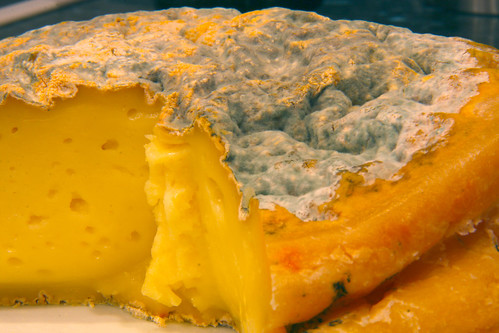Queso de la Serena - Serena Cheese

When my in-laws came back from their annual Easter trip to the La Serena region of Spain, they brought back a wheel of the typical cheese of the region, Queso de la Serena. It's made from the milk of Merino sheep, and it takes almost two dozen sheep to product enough milk for a kilogram of cheese. It's coagulated using a natural vegetable rennet taken from the cardoon, a thistle-like plant related to the artichoke. The coagulation happens very slowly, allowing for a rich, but tart, flavor to develop. Cheeses coagulated with cardoon tend to be very creamy, making the interior of the cheese very oozy. In fact, a traditional way to eat it is by slicing off the top and eating the creamy inside with a spoon. I've never done that, but it sounds wonderful. When I unwrapped the wheel my in-laws brought, which had been unrefrigerated for some length of time before, during and after their nine-hour drive from Extremadura, I may have leaned back in horror. It's not a pretty cheese. On further inspection, however, I did eventually find the bumpy moldy landscape quite beautiful and worthy of some photographs.
The taste is really wonderful if you like strong cheeses. On her initial tasting, Nora spit it back out, but over the week it took us to consume it, she learned to like it. On the last day, she ran into my office with a piece of it and pronounced, "It has a strong flavor!" Very true.

Yes, I did cut the mold off before eating.

It almost looks like a rocky landscape.



Yum!